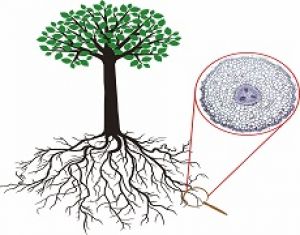Freschet, G.T., Pagès, L., Iversen, C.M., Comas, L.H., Rewald, B., Roumet, C., Klimešová, J., Zadworny, M., Poorter, H., Postma, J.A., Adams, T.S., Bagniewska-Zadworna, A., Bengough, A.G., Blancaflor, E.B., Brunner, I., Cornelissen, J.H.C., Garnier, E., Gessler, A., Hobbie, .E., Meier, I.C., Mommer, L., Picon-Cochard, C., Rose, L., Ryser, P., Scherer-Lorenzen, M., Soudzilovskaia, N.A., Stokes, A., Sun, T., Valverde-Barrantes, O.J., Weemstra, M., Weigelt, A., Wurzburger, N., York, L.M., Batterman, S.A., Gomes de Moraes, M., Janeček, Š., Lambers, H., Salmon, V., Tharayil, N. and McCormack, M.L. (2021). A starting guide to root ecology: strengthening ecological concepts and standardising root classification, sampling, processing and trait measurements. New Phytologist, 232: 973-1122.
DOI: 10.1111/nph.17572
The influence of plants on the biosphere, atmosphere and geosphere is a key factor in the functioning of terrestrial ecosystems. Research in plant root biology continues to hasten, and as a result many new scientists are entering the field. Accordingly, it is important to establish a standard set of criteria for monitoring root growth and development, both in laboratory and field conditions. However, despite significant progress in the field of analyzes of below-ground plant components, whose biomass is equal to or even higher than the above-ground biomass of plants, we have only started to understand the complex relationships between the traits characteristics and roots functioning.
Considering that the influence of plant roots on the functioning of agricultural and forest ecosystems is unquestionable, root ecologists currently face many important methodological challenges to keep on generating cutting-edge, meaningful and integrated knowledge. Thus, a first challenge lies in the difficulty to define a common, unambiguous language to accurately communicate among disciplines of root science and with the broader fields of ecology, agronomy, horticulture, forestry. The key to better understand the role of roots in the functioning not only of an individual plant, but also entire ecosystems, is the standardization of the applied research methods.
Despite the importance of this problem, the methodology used over the past decades has varied significantly, being disparate and sometimes inappropriate. Current publication was established on the collective effort of a large international team of experts, ecologists and biologists of the roots of higher plants. Standardization of root classification terminology will only improve trait comparisons across studies and enable integration of information across databases. There is also a need for better accounting of spatial and temporal variability of root traits, being aware that roots vary in anatomy, morphology and physiology throughout their life, and the time chosen for root sampling influences the value and meaning of trait measurements. Thus the main goal of the study published in the New Phytologist is to break down barriers between many subdisciplines of root ecology and ecophysiology, and the emphasis on a multi-faceted approach in root research, creating favorable conditions for comprehensive recognition of the importance of roots for the functioning of plants and ecosystems.
